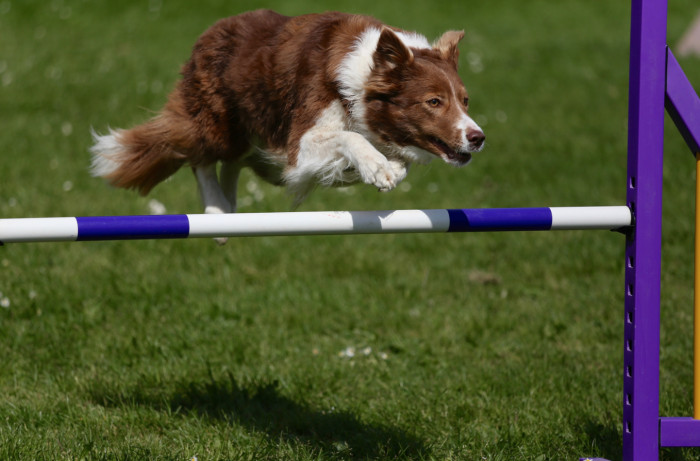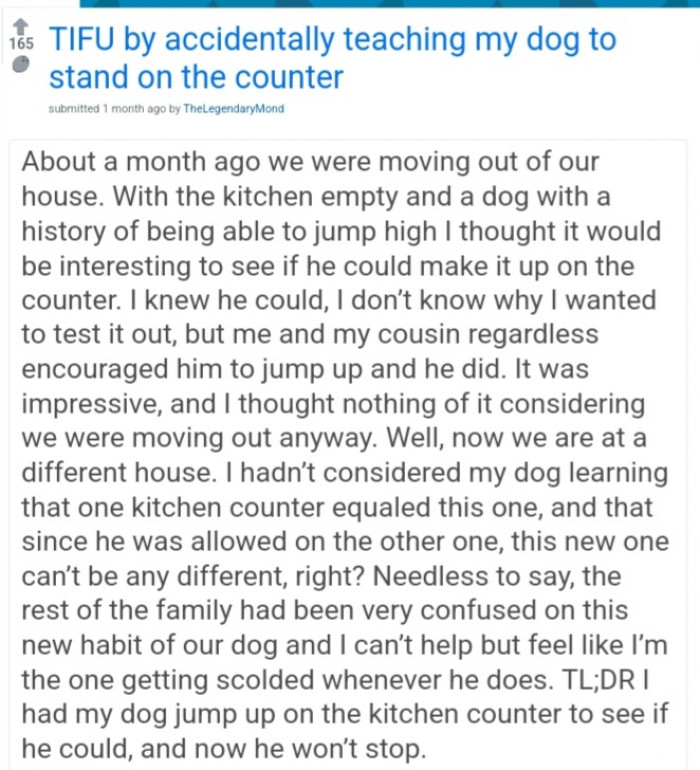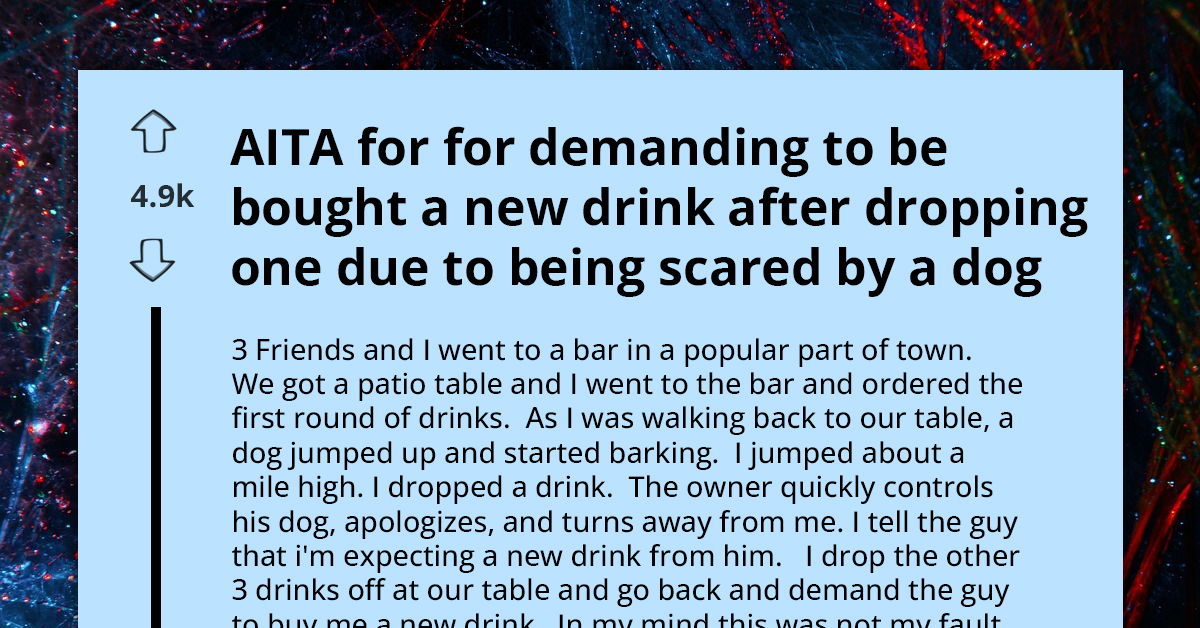Pet Owner Receives Tips From Fellow Dog Lovers After His Doggo Developed An Unwanted Habit
Jumping on random people and chewing items at home. These are just some of the common unwanted behavior commonly seen in dogs.
Most of the time, you shout "No!" in an attempt to stop them. But it doesn't always work.
Additionally, when we threaten our dogs to stop them from engaging in unwanted behaviors, we risk destroying our bond with them. Last but not least, telling your dog "no" does not give them any instructions or indicate what they ought to do instead.
All dogs, whether they're young or old, can potentially develop behaviors we find objectionable. So how can dog owners curb these unwanted habits?
As always, training is important. By teaching your dog that wonderful things happen when he obeys you, strengthening your relationship, and stimulating his mind, positive reward-based training will make him tire out and lessen the chances of misbehaving.
Each week, try adding a new command while continuing to use the previous ones. Also, try channeling your dog's energy to other activities that aren't destructive to your home.
For example, try going for long walks outdoors or going out on a jog with your furry companion. If you're just chilling outdoors, toss balls they could chase in your backyard.
Remember that a dog's behavior is based on routines and habits. With patience, you can stop your dog's bad habits.
And if you're curious about how other dog owners approach this problem, take a look at this thread from Reddit.
Some dogs are so good a jumping.

But what is a pet owner to do if their dog suddenly develops a habit of standing on the counter?

Here's the full story.

One important concept in understanding unwanted behaviors in dogs, such as jumping on counters, is the principle of operant conditioning, first introduced by B.F. Skinner. This psychological theory posits that behaviors followed by rewards are likely to be repeated. In the case of dogs, if jumping on the counter leads to rewards such as food scraps or attention, the behavior is reinforced and likely to occur more often. A study published in the Journal of Applied Animal Welfare Science demonstrated that positive reinforcement, when consistently applied, can significantly reduce unwanted behaviors in dogs, highlighting the effectiveness of rewarding desirable behavior rather than punishing the undesirable one.
Practical Training Techniques
Incorporating practical training techniques can significantly improve behavior management. Techniques such as 'Go to Place' can be particularly effective; when the dog jumps on the counter, the owner can redirect them to their designated spot with a command like 'place.' According to research by the Association of Professional Dog Trainers, consistent use of this technique, along with positive reinforcement when the dog complies, can create a reliable association between the command and the desired behavior. This kind of structured training not only addresses the immediate issue but also contributes to long-term behavioral improvement.
Understanding Canine Behavior and Training
When a dog develops unwanted habits, such as jumping on countertops, it can be a source of frustration for pet owners. Research from the American Veterinary Medical Association emphasizes the importance of training and consistency in shaping pet behavior. Understanding the underlying motivations for these behaviors is crucial—dogs often jump up to seek attention or explore their environment.
By addressing these motivations through positive reinforcement strategies, owners can effectively modify their pet's behavior while strengthening their bond with their furry companions.
Understanding Canine Behavior and Training
Dr. James Wilson, an animal behaviorist at the University of Toronto, emphasizes that addressing unwanted habits in pets requires understanding the underlying causes.
Research indicates that behaviors such as counter-surfing in dogs often stem from instinctual drives or learned behaviors.
Identifying these triggers is crucial for effective training and behavior modification.
Redditors will always look for a dog tax

A redditor suggests a solution.
They also made him realize that it was a mistake to make the dog jump on the counter.

More requests for dog tax.

Understanding Behavioral Triggers
Behavioral psychologists emphasize the importance of identifying triggers that lead to unwanted behaviors in pets. Research from the University of Pennsylvania suggests that many dogs exhibit problematic behaviors due to boredom or lack of physical and mental stimulation. The study found that dogs that engage in regular exercise and interactive play are less likely to display destructive behaviors. Therefore, it's crucial for pet owners to understand their dog's needs and provide adequate outlets for energy through walks, playtime, and puzzle toys, ensuring both physical and cognitive engagement.
Moreover, the owner's emotional response to their dog's behavior can influence their training approach. According to studies in animal behavior, when owners express frustration or anxiety, it can inadvertently affect the dog's learning process. A study from the University of California, Davis, highlights that dogs are highly attuned to their owner's emotions, meaning that calm and positive interactions during training can lead to better outcomes.
Thus, fostering a positive training environment is essential for both the dog's development and the owner's emotional well-being.
Studies in animal psychology suggest that positive reinforcement training can effectively change unwanted behaviors.
When owners understand the motivations behind their pet's actions, they can implement strategies that redirect these behaviors in a constructive manner.
This fosters a deeper bond between pets and owners, as it emphasizes cooperation rather than punishment.
The original poster (OP) finally delivers what people want.

These are such beautiful dogs!

Another solution.
When it comes to training dogs, everyone tends to make mistakes. But there will always be a solution to unwanted behaviors.

The use of punishment in dog training can lead to increased anxiety and fear, potentially exacerbating behavioral issues. According to a study published in the Journal of Veterinary Behavior, punitive measures such as yelling or physical corrections can cause dogs to become more anxious and less trusting of their owners. This is critical to consider because undermining the bond between a pet and its owner can lead to a cycle of misbehavior and punishment that can be difficult to break. Instead, professionals recommend employing a training approach that focuses on building trust and communication, using methods such as clicker training to reinforce positive behaviors effectively.
The Role of Consistency in Pet Training
Consistency is a critical factor in successful pet training. Research from the Journal of Animal Behavior emphasizes that clear and consistent commands and expectations can significantly improve a dog's learning experience. Inconsistent training can lead to confusion, making it more challenging for dogs to understand desired behaviors.
Establishing a routine and being consistent with commands can help reinforce positive behaviors, ultimately leading to a more harmonious living environment.
Practical Solutions for Behavioral Issues
To manage unwanted behaviors in pets, owners should consider developing a consistent training regimen.
This might include establishing clear rules, using positive reinforcement techniques, and creating a structured environment that limits opportunities for unwanted behaviors.
Seeking guidance from a professional dog trainer or behaviorist can also provide tailored strategies for individual pets.
The OP appreciates the advice.

Another way of re-channeling the high energy of dogs

People love the dog tax.

Implementing Positive Reinforcement
To effectively curb unwanted behaviors such as counter surfing, implementing a structured training program based on positive reinforcement is advisable. Research by Dr. Karen Overall, a veterinary behaviorist, highlights that teaching alternative behaviors, such as 'off' or 'down,' can redirect a dog's focus and energy. For instance, when a dog jumps on the counter, instead of simply saying 'no,' the owner can guide the dog to a designated spot using treats and praise when the dog complies. This not only diminishes the unwanted behavior but also strengthens the bond between the dog and owner, fostering a more harmonious household.
Additionally, engaging in training sessions with the dog can enhance the emotional bond between pet and owner. A study conducted at the University of Pennsylvania indicated that interactive training sessions can foster trust and communication, leading to a deeper connection. Such interactions not only improve behavior but also contribute to the overall well-being of the pet, which is beneficial for both parties.
Incorporating fun activities into training can also motivate dogs to learn and engage positively, enhancing their overall experience.
Creating a supportive training environment is key to addressing behavioral issues effectively.
A psychologist specializing in animal behavior advises that patience and consistency are essential for success.
By understanding the pet's perspective, owners can foster a more supportive training approach that leads to lasting behavioral change.
They're lovin' his dogs.

This could work.

But for some dogs, aluminum foil is a chewable. It's still worth a try, though.

Another psychological principle that comes into play with canine behavior is the concept of learning through observation, also known as social learning. Research from UCLA demonstrates that dogs are capable of learning behaviors by watching other dogs or humans. This implies that a pet owner’s reactions and training methods can significantly influence how a dog behaves. For example, if a dog sees another dog receiving attention for sitting calmly rather than jumping, it may be motivated to imitate that behavior. This highlights the importance of modeling appropriate behaviors and maintaining consistency in training practices.
Practical Tips for Modifying Pet Behavior
To effectively modify unwanted behaviors, pet owners can implement several practical strategies. First, identifying triggers that lead to the undesired behavior, such as jumping on counters, is essential. Research suggests that keeping a consistent routine can help manage these triggers and reduce the likelihood of unwanted behavior.
Additionally, using positive reinforcement techniques, such as treats and praise, can encourage desirable behaviors. Training sessions should be short and engaging to maintain the dog's interest, making learning a fun experience for both pet and owner.
Redditor pulling off a dad joke

Another dog owner who made the same mistake.

The time needed to unlearn the behavior would also depend on the breed of the dog.

Enhancing the Human-Dog Bond
The quality of the bond between a dog and its owner can impact behavior significantly. A study published in the journal Animal Cognition found that dogs who perceive their owners as cooperative partners are more likely to engage in positive behaviors. This suggests that fostering an environment of trust, affection, and mutual respect can enhance training outcomes. Owners can strengthen this bond by engaging in joint activities, whether through training sessions, play, or simply spending quality time together. This not only enriches the dog's life but also improves the owner's understanding of their pet's needs and behaviors.
Ultimately, addressing unwanted behaviors requires a balance of patience and consistency. A study from the Journal of Veterinary Behavior indicates that positive reinforcement, combined with a structured training approach, leads to more successful outcomes in modifying behaviors. By fostering an environment of understanding and support, pet owners can create a more enjoyable and harmonious living situation for themselves and their pets.
This approach not only enhances the dog's behavior but also contributes to the overall well-being of the owner.
Next time, don't let dogs play in the kitchen.

It was a mistake. We hope the dog unlearns it soon!

The kitchen has so many items that could be potentially be dangerous to the dog. It needs to unlearn the habit fast!

Understanding the role of stress in canine behavior is vital as well. Research from the University of Cambridge indicates that stress can manifest in dogs through various unwanted behaviors, including jumping and chewing. Factors such as changes in the home environment, a lack of routine, or even the presence of other pets can contribute to stress levels. To mitigate this, owners should strive to maintain a consistent routine and create a calm environment, potentially incorporating elements like safe spaces or calming aids, which can help reduce anxiety and promote more desirable behaviors.
Remember that quitting undesirable behaviors doesn't usually proceed in a linear path. Owners may need to review and make changes to a dog's training regimen to see which one works.
Unlearning might be challenging for some dogs. But whether the OP uses bubble wraps or aluminum foil, we do hope the doggo leaves the kitchen counter alone soon!
Psychological Analysis
This situation underscores the importance of understanding canine behavior to address unwanted habits effectively.
Creating a supportive training environment with clear expectations can lead to lasting improvements in pet behavior.
Analysis generated by AI
Analysis & Alternative Approaches
Managing unwanted behaviors in pets requires a nuanced understanding of animal psychology and behavior.
Research shows that employing positive reinforcement techniques can lead to more effective and humane training outcomes.
By prioritizing understanding and cooperation, pet owners can foster healthier relationships with their animals.
Analysis & Alternative Approaches
In conclusion, modifying unwanted pet behaviors requires a combination of understanding, consistency, and positive reinforcement. By engaging in training that focuses on building trust and communication, pet owners can foster a more harmonious relationship with their animals. Implementing practical strategies can lead to improved behavior and a deeper emotional bond between pets and their owners.
Professional Assessment & Guidance
Ultimately, addressing unwanted behaviors in dogs requires a combination of understanding behavioral psychology and implementing effective training strategies. Behavioral specialists emphasize the importance of positive reinforcement and environmental management to foster better habits in dogs. By investing time in learning about their dog's needs and behaviors, owners can create a more peaceful living environment and strengthen their bond. This journey isn't just about correcting behavior; it's about nurturing a positive relationship where both the owner and the dog can thrive together.



